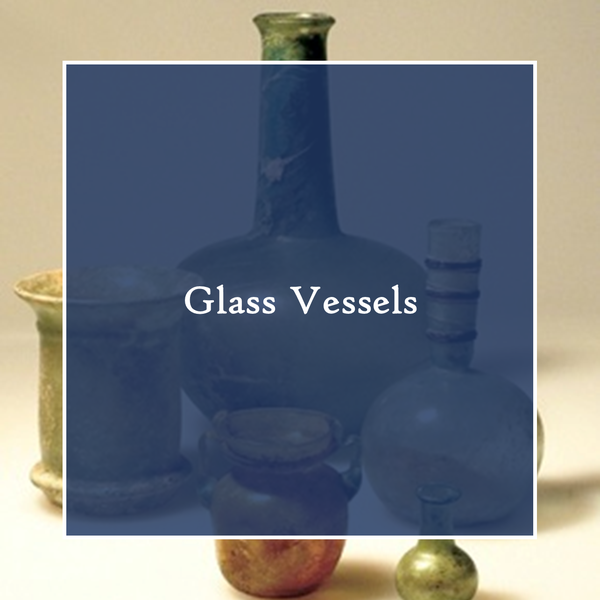Glass Vessels
|
The Collection of Classical Antiquities holds an extensive assortment of antique glass vessels. This collection includes some early pieces from the Archaic period, as well as numerous Roman glasses, primarily from the eastern Mediterranean region, including Asia Minor and Syria. Most of these glasses date from the 2nd to the 4th century AD. The predominantly good condition of these delicate vessels suggests that they were used as grave goods. Glassworking was developed in the 3rd millennium BC, likely in Mesopotamia. The earliest glass objects were beads, seals, and pendants. The oldest glass vessels, which come from Egypt, date back to the 16th century BC. These Egyptian vessels were primarily small items such as anointing oil vials. Due to the elaborate and technically complex manufacturing process, these items were considered expensive luxury goods. Glass pendants and beads are also known from Mycenaean culture. Early glass vessels were produced using the so-called sand core technique. In this method, a core of clay and sand was either dipped in molten glass or wrapped with molten glass threads. Various decorations could be applied to the vessel using this technique. Once the glass had cooled, the core was removed. These vessels are typically small and often feature multi-colored decorations. Knowledge of glassworking spread from Egypt and the ancient Orient to Greece, where it remained less significant compared to ceramics. Until Hellenistic times, small vessels were also molded over a sand core. It was not until the invention of the blowpipe in the 1st century BC in Sidon, Phoenicia, that mass production of thin-walled glass vessels became possible. This process required melting the glass at high temperatures. The glass was heated above 1000 °C in a furnace and then processed while still viscous. With the blowpipe, the glass was inflated into various shapes, allowing for relatively simple and inexpensive serial production of glass vessels. From Augustan times onwards, this new manufacturing technique spread throughout the Roman Empire, leading to the establishment of numerous production sites. Roman glass was produced in a range of colors and shapes, with decorations such as contrasting colored bands, metal inlays, or engravings. Thanks to the optimized manufacturing process, glass was also used for other applications during Roman times, such as window panes (specularia). |
|

